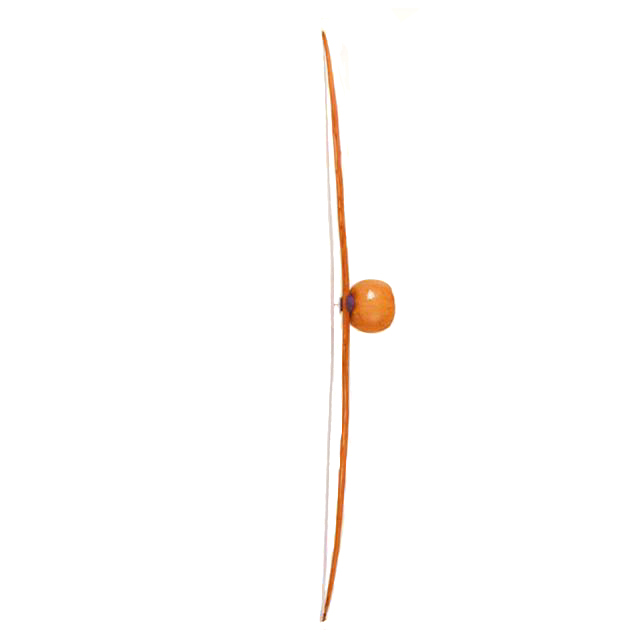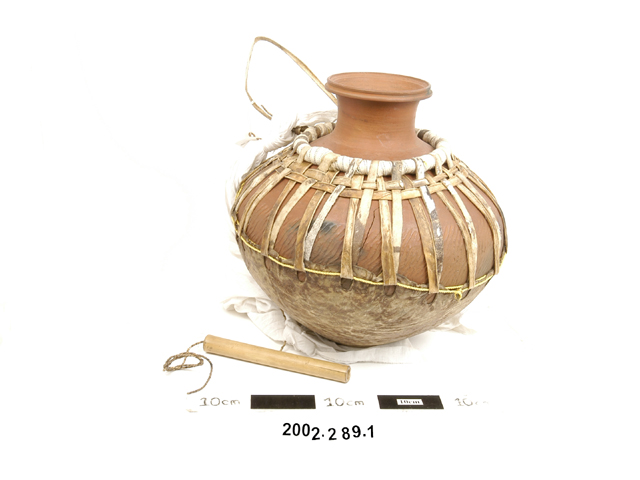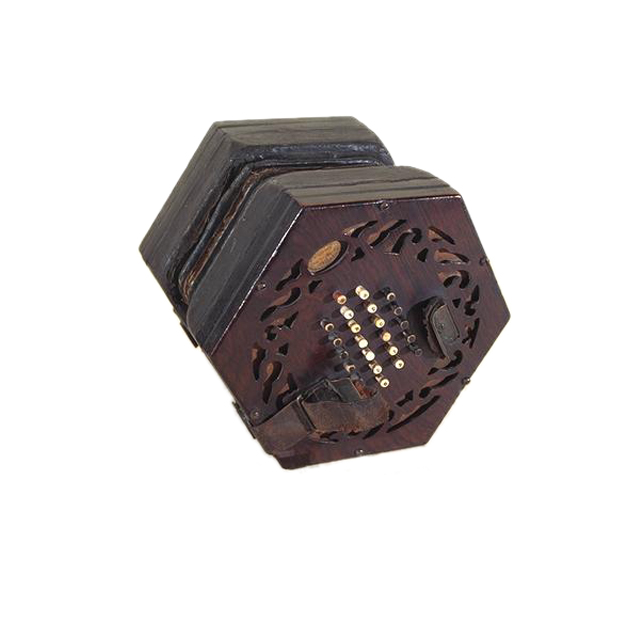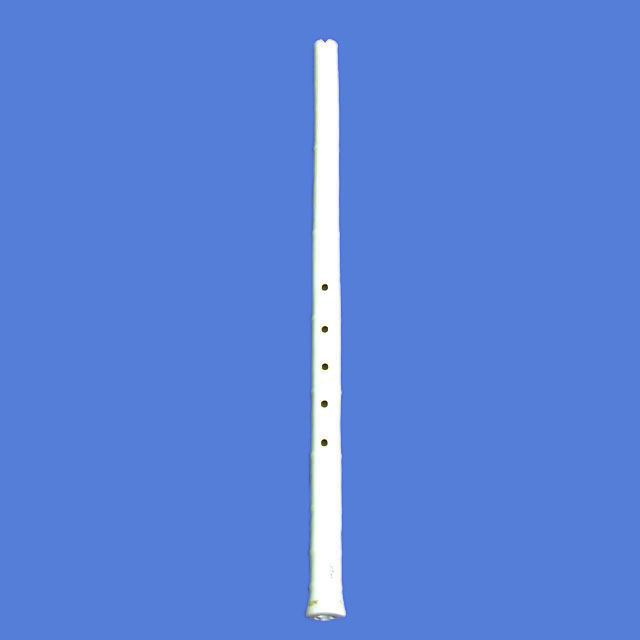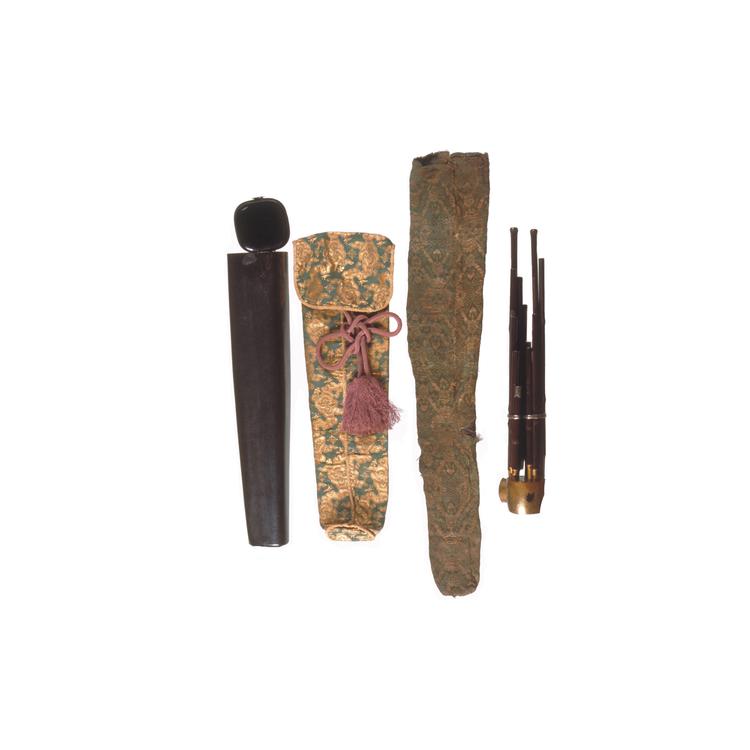
Sho, mouth organ. A free reed instrument with a metal bowl or wind chamber, into which vertical bamboo pipes are positioned in a circular formation. Seventeen bamboo pipes, three of them mute, three with silver caps, and two with silver-bushed rectangular slots, all held together by a silver band cast to simulate the nodes of a bamboo cane. The pipes have finger holes near the bottom which when covered engaged an internal free reed. The bronze free reeds are now separate from the instrument. In accordance with the usual practice, they have traces of potassium nitrate to prevent them from sticking to their frames when moist. The reeds have spots of wax applied for tuning. The pipes each have an undecorated rectangular hole on the back. The sides of each bamboo pipe have been shaped to accommodate its neighbour. Each is tapered at the bottom where it meets the wind chamber, and the tapered sections are painted gold. An inscription written in gold kanji on one of the pipes translates as 'Made in July of the second year of Anei [1773]. Entitled to the widely known name of the house of Udzumasa, governor of the province of Kii, nominated by the Emperor to the 4th rank Inferior 1st degree.' The wind chamber is gold and silver lacquered with a design of butterflies and cherry blossoms in Togidashi and Takamaki-e on a nashiju ground. A short mouthpipe with similar decoration extends from one side and terminates in a silver lip plate with a rectangular mouth hole. The instrument has two cloth covers, one of which is decorated in green and gold brocade, and a wooden case with an urushi-ware finish and a silver hinge and clasp in the form of a butterfly.



